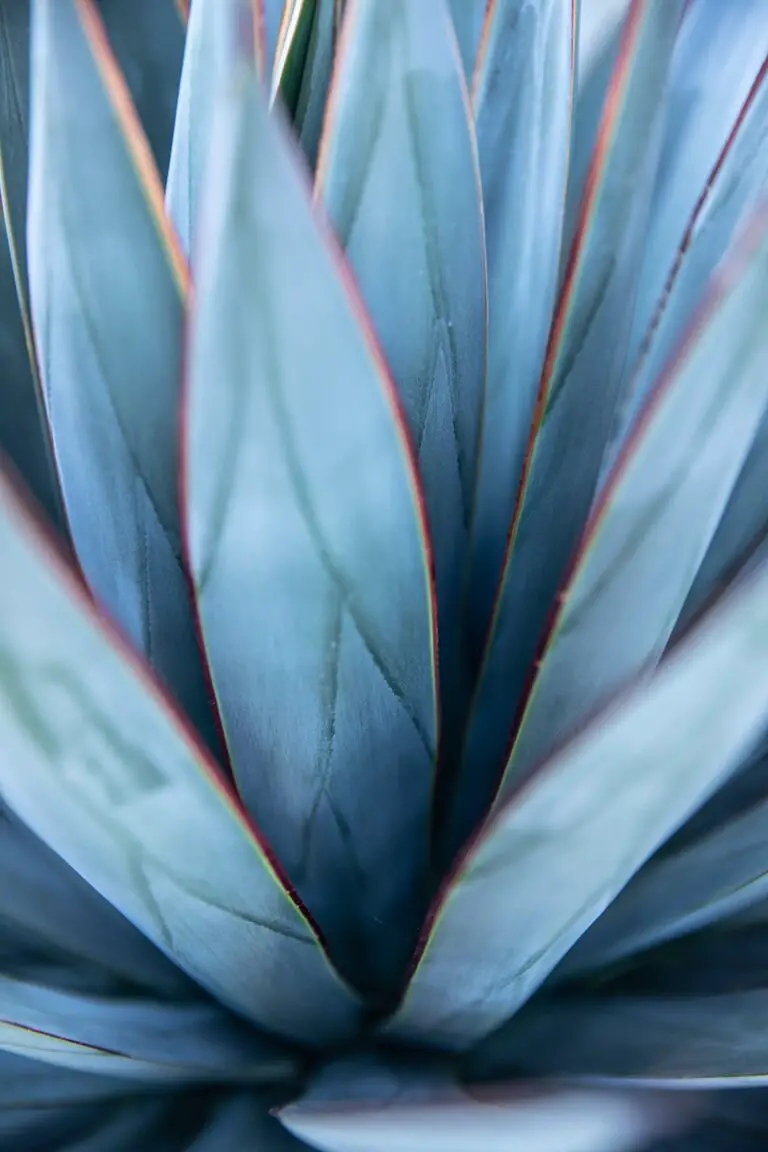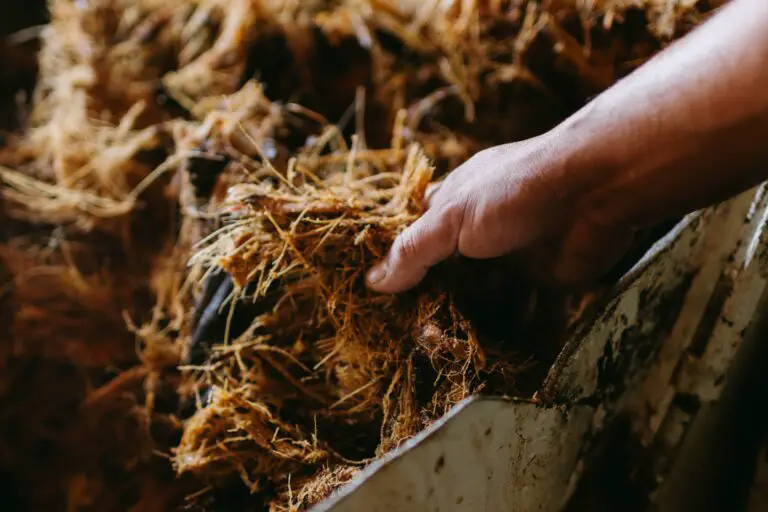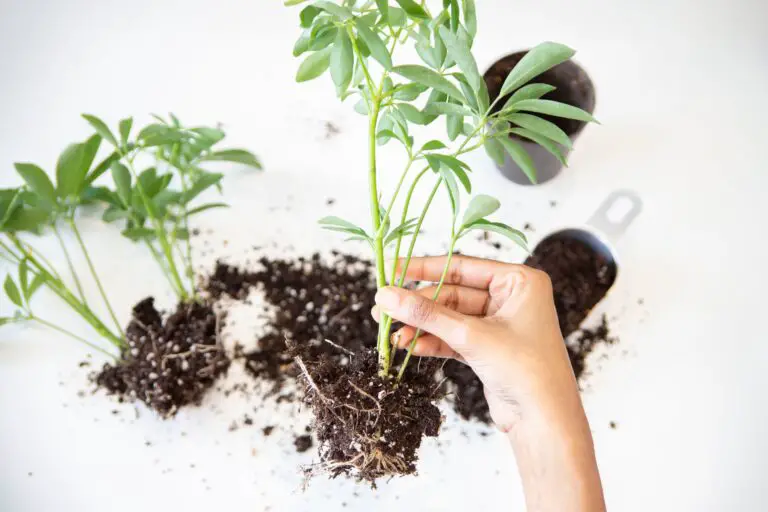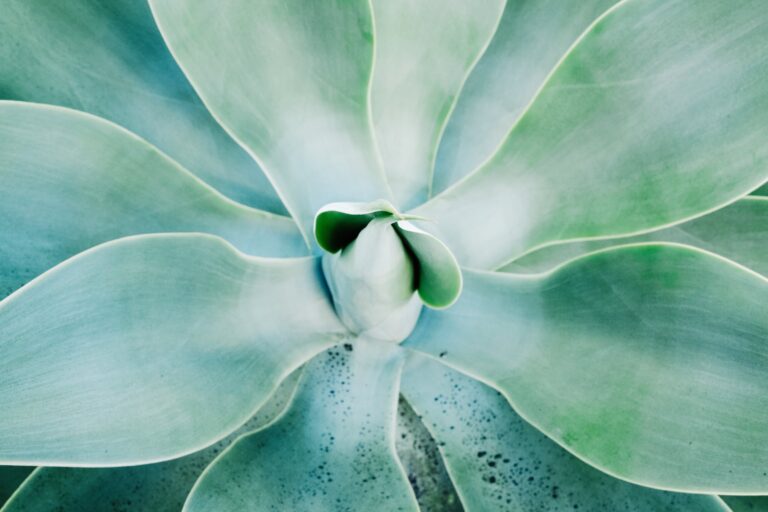Introduction to Agave Parryi
Welcome to the world of succulents, where the Agave Parryi holds a place of honor. If you’ve been on the lookout for a hardy plant that brings a touch of the exotic to your dry garden, look no further. This striking succulent offers a blend of toughness and aesthetics that’s hard to beat.
The Agave Parryi, sometimes known as Parry’s Century Plant, is itself a small universe of fascination. Originating from the deserts of Arizona, New Mexico, and northern Mexico, these plants have evolved to not only survive but also thrive in some of the harshest climates on the planet. That’s real-life survival goals for you!
One look at this succulent and you’ll be captivated. It sports a rosette-like shape, with leaves uniquely outlined with sharp edges. The leaves are a stunning powder blue-gray that contrast beautifully with the dark reddish-brown spines on the margins. If that isn’t enough, during blossoming, the Parry’s Century plant shoots up a towering flower stalk, bedecked with yellow-red flowers that can reach up to 20 feet in height!
What Makes Agave Parryi Unique?
Agave Parryi isn’t just all about appearances, though. This succulent is a part of the Agave genus – a group of plants known for their ability to store water in their thick leaves. The Agave Parryi has a unique metabolic function that allows it to conserve water by processing it at night when the temperatures are cooler and evaporation rates are lower. This means it has a higher survival rate in dry conditions than most other species, making it the ultimate tough guy of the plant kingdom.
More than just survivors, these plants are also important to their ecosystems. The nectar from their towering flower stalks attracts and feeds a variety of bird species, while their discarded leaves provide shelter for numerous desert-dwelling creatures.
So, when you’re adding an Agave Parryi to your cactus garden or well-drained borders, remember – it’s not just a plant, it’s a mini-ecosystem bringing a piece of the desert wilds to your backyard!
Understanding the Growth Cycle of Agave Parryi
If you’re a garden enthusiast who’s into succulents, there’s a high likelihood you’ve come across the Agave Parryi, a star performer in dry gardens. This remarkable plant, which thrives in arid settings, has a fascinating growth cycle that’s worth exploring. So, let’s dig a little deeper and uncover what makes this succulent tick.
Natural Habitat of Agave Parryi
First off, Agave Parryi hails from the desert regions of Arizona, New Mexico, and northern Mexico. In these areas, this succulent has adapted to survive in rocky, well-drained soils. It’s built to thrive under full sun exposure with quite minimal rainfall. If you’re planning to grow Agave Parryi, recreating its natural habitat will go a long way in ensuring its successful growth.
Growth Speed and Lifespan
Agave Parryi is a relatively slow-growing succulent. It might take several years for a plant to mature fully. Interestingly, an individual rosette lives for about 10 to 15 years before starting its final blooming phase. Yes, you heard that right. The Agave Parryi, unlike most plants, puts on a magnificent bloom display only once in its lifetime!
Blooming Season and Identifying Mature Plants
During its blooming phase, the plant sends up a tall, flower-brimming stalk that can measure up to 20 feet high. This thrilling spectacle usually occurs in late spring or early summer, generally signifying the plant’s maturity. So, when you see an Agave Parryi with a towering flower stalk, you know it’s reached its mature phase. Once the blooming phase concludes, the individual rosette dies off, making way for pups or offsets to take over.
We’ve just scratched the surface of Agave Parryi’s intriguing growth cycle. To truly appreciate this succulent’s journey, watch the following video. It gives a more visual, comprehensive analysis of the whole growth process:
The Ecological Importance of Agave Parryi
Take a moment to consider the robust Agave Parryi, the star of dry gardens. This plant is more than just a beautiful succulent; it holds a critical place in the ecological order. With the ability to survive in arid climates and rough terrains, this tenacious plant serves as a lifeline for many organisms in the ecosystem.

The Agave Parryi plays an impressive role in the environment; it’s a survival specialist. In areas where most plants fail to grow due to lack of water, the Agave Parryi thrives, helping prevent soil erosion, one of the significant environmental concerns. Unique features like broad, thick, waxy leaves allow it to store water and survive prolonged dry seasons. At the same time, its extensive root system binds the soil, checking erosion efficiently.
An Oasis for Wildlife
Agave Parryi provides an oasis in the desert for many fauna species. Birds, insects, and even mammals find refuge, food, and water in this hardy succulent. During blooming, it attracts scores of pollinators with its nectar-rich flowers. Moreover, bats, a vital pollinator species in desert ecosystems, rely heavily on the Agave Parryi, making the plant an essential cog in the biodiversity wheel.
Climate Soldier
A lesser-known fact about Agave Parryi is its role in climate regulation. Like other plants, it performs photosynthesis. However, unlike most, it follows a unique process called CAM (Crassulacean Acid Metabolism) photosynthesis. You might be thinking, “What’s special about that?” Well, this means that the plant conserves water by taking in carbon dioxide at night when temperatures are cooler and humidity is higher; thus, minimizing water loss.
This astoundingly resilient plant not only beautifies our gardens but also shoulders ecological responsibilities like soil conservation, providing shelter and sustenance to desert life, and combating climate change. The next time you see a beautifully sculpted Agave Parryi, remember – it’s not just another succulent, it’s an ecological superhero!
Benefits and Uses of Agave Parryi
When we talk about Agave parryi, commonly known as Parry’s Agave, we’re talking about a plant that’s much more than just a source of beauty and decorative appeal. In fact, Agave parryi is utilised in a multitude of exciting and beneficial ways, from landscaping to home décor, traditional medicine and even commercial products like agave syrup.

Landscaping
Firstly, let’s talk green spaces. Agave parryi is an extraordinary plant for dry gardens or xeriscaping – a landscaping philosophy that utilizes plants requiring minimal water. This succulent plant, with its rosette of thick, fleshy leaves and dramatic flower stalks, can make an impressive statement in any garden and is particularly suited to arid environments where water conservation is key.
Home Décor
Moving indoors, Agave parryi isn’t just a plant, it’s a stylish addition to your interior design scheme. With succulent décor a top trend, a little strategically placed Agave parryi can add a striking and modern touch to any home. Whether potted in corners or showcased as a tabletop centerpiece, this plant’s unique aesthetic appeal works well with various décor styles, from rustic to contemporary.
Traditional Medicine
Oh, and did we mention that this good-looking plant also has medicinal uses? Indeed! Agave parryi has been used in traditional medicine for centuries to treat a range of ailments. The leaves are said to have antiseptic, wound-healing, and anti-inflammatory properties, proving Mother Nature really is our most skilful pharmacist.
Commercial Products
Last but certainly not least, let’s not forget the commercial implications of Agave parryi! The sweet sap of this plant is used to produce agave syrup, a natural sweetener that’s become a popular alternative to sugar. Next time you sweeten your morning coffee or top off your pancakes, you might just be tasting a bit of Agave parryi!
So there we have it! The amazing Agave Parryi; bringing beauty to our gardens, a chic touch to our homes, a helping hand to our health, and sweetness to our palates. One plant, so many possibilities!
Proper Care and Maintenance for Agave Parryi
When it comes to making a big, bold statement in your dry garden, few succulents can outshine the Agave parryi. Its rosettes of spiky, bluish-green leaves can add an eye-catching element of texture to any outdoor landscape. But what does it take to keep an Agave Parryi thriving? Let’s delve into the prime practices for nurturing this sturdy succulent.
First thing’s first: introducing sunlight requirements. No one enjoys being left in the dark, and your Agave Parryi is no exception! This sun-loving succulent thrives in full sun to partial shade. Consider placing it in a part of your garden that gets anywhere from six to eight hours of sunlight per day. It’s like a sunbathing session for your Agave Parryi, minus the beach chair and sunglasses!

Next up: let’s talk soil. The operative term here is ‘well-drained’. Your Agave Parryi isn’t fond of ‘wet feet’! Opt for a sandy or gritty soil mix, ideally one designed for cacti and succulents. This ensures the roots don’t stay waterlogged and prevents rotting. It’s similar to how we wouldn’t want to walk around in wet socks, right?
Watering routing
Speaking of water, the watering routine for Agave Parryi may be different than what you’re used to. This desert dweller prefers a ‘soak and dry’ watering method. Meaning, it’s better to give it a thorough watering and allow the soil to completely dry out before the next watering session. Kind of like how we would appreciate a big glass of water after a long run, rather than sips every few hours.
Last but certainly not least, let’s navigate through the prickly issue of pests and diseases. Agave Parryi may be hardy, but it’s not immune to certain insects or fungal diseases. Common culprits include agave snout weevil or fungal rots. Regular check-ups can help keep these unwelcome guests at bay. Think of it as playing detective in your garden – only this time, you’re saving the day for your Agave Parryi!
In addition to these care tips, it’s pertinent to note the optimum planting season – spring or early summer. And as with any star, the Agave Parryi likes to make an entrance. To plant, dig a hole about twice as wide and deep as the root ball, place the plant in the hole, backfill with soil, and water thoroughly. Think of it as the red carpet rollout for your new succulent star!
Common Diseases and Pests of Agave Parryi
If there’s one thing every gardener dreads, it’s seeing a beloved plant being beset by disease or pests – and the Agave Parryi, a star in any dry garden, is no exception to this rule.

While Agave Parryi is lauded for its resilience and dry-climate hardiness, it does not mean it’s entirely immune from problems. As with any plant, certain issues may potentially put the health of your Agave Parryi in jeopardy.
Bacterial and Fungal Diseases
Just like humans, plants also have their share of bacterial and fungal issues. Agave Parryi, particularly, can encounter diseases such as bacterial rot and fungal leaf spot. They often strike when the plant is weakened by overwatering or injuries, providing an easy gateway for these tiny attackers. If you notice the plant’s leaves turning yellow or observing rotted or spotty sections, it’s likely one of these diseases at play.
Pests
On the pest side of things, Agave Parryi’s biggest enemies are the Agave snout weevil and the cactus moth caterpillar, both of which can cause severe damage. The Agave snout weevil, for instance, bores into the heart of the plant to lay its eggs, and in doing so, brings along harmful bacteria. On the flip side, cactus moth caterpillars munch on the external parts of the Agave, causing significant damage to its appearance and overall health.
Protective Measures
Prevention is better than cure, as the saying goes. Protect your Agave Parryi by ensuring it’s planted in well-draining soil, avoiding overwatering, and regularly checking for signs of pests. If you suspect a problem, don’t hesitate to consult with a local nursery or extension service. After all, the health and vibrant beauty of your Agave Parryi is worth safeguarding.
Frequently Asked Questions about Agave Parryi
Who isn’t curious about the mystifying Agave Parryi? It’s a star of many drought-tolerant gardens, and it’s no wonder so many plant-lovers have questions about it. If you’re one of them, rest easy. We’ve received a bunch of questions about this hearty beauty and we’re more than happy to share what we know. We’re all about turning that curiosity into garden-tending confidence!
Agave parryi, also known as Parry’s Agave or the Century Plant, hails from the deserts of Arizona, New Mexico, and northern Mexico. It’s well-adapted to arid conditions, making it a fantastic choice for gardens in drier climates. But even if you live in a slightly wetter area, keep reading. With the right care, you can make it feel right at home.
How to Care for Your Agave Parryi?
Agave parryi is a plant that minds its own business. It doesn’t ask for much, just plenty of sunlight, well-draining soil and a bit of your love. If you’re used to more needy plants, caring for Agave parryi might feel a bit like plant-neglect. But don’t worry, as long as it’s getting plenty of sunshine and not getting water-logged, it’s probably very happy.
What Growth Patterns Can You Expect?
Here’s where the “Century Plant” nickname gets debunked. The rumor is that Agave parryi only blooms once every 100 years! The truth isn’t quite as dramatic, but it’s still pretty cool. Your agave parryi will likely live for 10-20 years before it shoots up a magnificent flowering stalk. The bad news is that after it blooms, the plant will die. The good news is that it’ll probably leave behind a bunch of “pups” or baby plants.
What Are the Common Problems with Agave Parryi?
The biggest threats to your agave parryi are overwatering and freezing temperatures. If the roots sit in water, the plant is likely to rot. And while it can handle a chill, prolonged exposure to temperatures below 20 degrees Fahrenheit can cause it irreversible damage.



